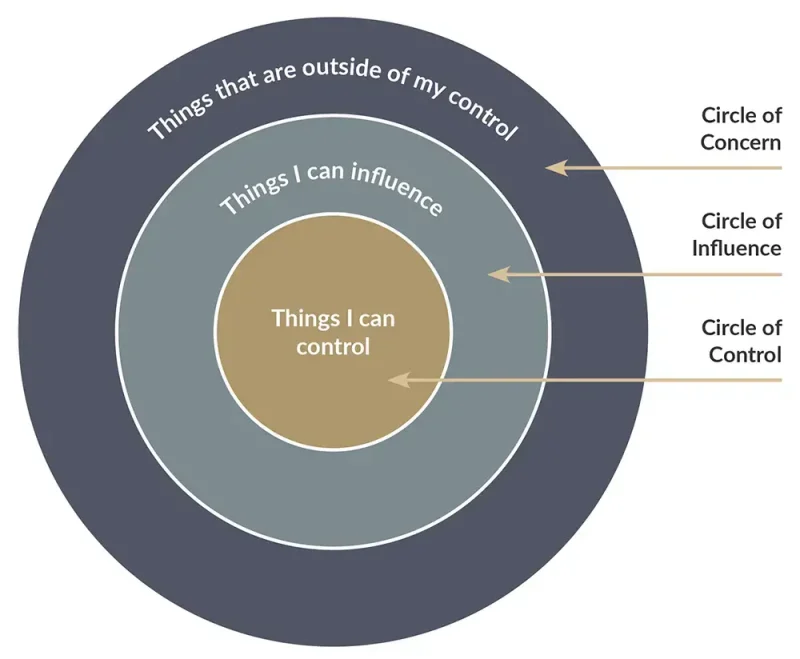
Category: Employer tips
-

How To Believe In That Little Idea...
Continue ReadingRead Time/Watch Time
5 minutes
Who should read this?
Veterinarians, vet nurses, vet techs, employers.
Author(s)
Melanie Barham
Region
Global content
How to believe in that "little" idea you have
Will you believe in yourself? Will you say your idea out loud?
When I started writing about non-clinical careers in vet med, it was an idea I kept quiet in my head for a LONG time. To be honest, I was so shy about the idea, about standing out or being a tall poppy that for a long time I just researched it, getting deep into articles about how to build a website and blog. Imagine if I had never done anything? I’d have missed out on a lot of cool things.
I see this time and time again, where people in our profession have a super idea they are afraid to say out loud, let alone bring it to reality. Not even letting that idea ever be said aloud.
Down with that, friends.
What a shame it would be to get to the end of your life, career, or year and have never ever taken a chance. What waste os exceptional brain power- yours!
Since the days when I couldn’t even say that I wanted to share stories of non-clinical careers, I’ve gained a lot of confidence, a global community of colleagues, and so so much.
I LOVE cheerleading people to bring their ideas to light; it brings me so much joy and energy, and I love hearing how people have summoned their courage and done something amazing with their idea. Most of them, like me, have watched that tiny bit of courage grow into new avenues and opportunities they didn’t even know existed.
As a recovering “hide your light under a bush” person who almost didn’t get up the courage to write that first blog, here’s a few top tips I can share if you’re feeling the same way.
- Write your idea down
- Share your idea with people who deserve to hear it
- Take 1 small first step, and then another
- Remind yourself of other times you’ve been brave and it’s been ok
- Write out the worst case scenario
- Watch Ted Lasso (not joking, I love this show)
If you’re looking for support as a leader or an individual, check out group career coaching in the UK and North America. We’ve helped people like Emily Singler take her big idea from dream to reality. It makes change possible. And we’ve got 10 cohorts of success to show it!

Curious to know More?
Subscribe to our newsletter and never miss our free events, resources, and tips!
-

How To Make Change Easier On Yourself
Continue ReadingRead Time/Watch Time
5 minutes
Who should read this?
Veterinarians, vet nurses, vet techs, employers.
Author(s)
Melanie Barham
Region
Global content
How to make change easier on yourself
Why is change so hard to make happen?
I remember how “easy” it was for me to set my mind to applying o vet school. It was arduous, and hard to study that much, but I did it with relative ease. Other change like career shifts, changing how you work, bringing new ideas to your team…. so much harder.
What gives?
Change science tells us that change is more successful when:
- You are in a supportive environment
- You aren’t the only change agent
- There are others who are going through the same thing
- You have tools and support to succeed
Hm, this does sound like I had the ingredients for success in applying to vet school. Climb Mount Chore Re-evaluation… not so much.
Here are some additional top tips for making change easier on yourself from leading change scientists:
Examine your competing beliefs
Kegan and Lahey described the Immunity to Change process in their book (which I recommend so much I should be their brand ambassador). TL;DR version: you might have a goal or change in mind, but you won’t be successful at making it happen if you have a competing belief.
Willpower alone will not cut it
The theory of willpower posits that, “I want the change to happen, so I’ll make it happen!” But there are very few people in the world who actually achieve all their goals on willpower alone (American Psychological Association, 2021). It is ONE change model, but for some reason, willpower has become an overwhelming, overarching singular theory.
Are you ready to make changes? Is your team or the people around you?
Evaluating readiness for change is part of the principle used in motivational interviewing (underpinned by the transtheoretical model of change… say that 5 times fast!). Turns out, there’s at least 5 steps in being ready to really make a lasting change. So, if you are roadblocked, it could be that you (or your team), are stuck at the beginning phases of change, or haven’t made the leap to the next phase. The good news is that using techniques like coaching can help you understand yourself and what you need to move to the next phase to make change happen.
Evaluate what you are in control of, and what you’re not
Often with change, we expect that we can change everything, or if it doesn’t ALL happen the way we want, it was a failure. The theory of “Circles of Control” is a useful one to help set realistic expectations for success. There’s a small circle that you can control directly. There are areas you can influence, and areas you can have concern for also. Don’t get stuck defining successful change by things you have no control or influence over. Don’t get defeated by setting goals that you have no control over. You can’t control if you’ll get hired, but you can control how many jobs you apply for, how much effort you put in, and how you show up for interviews etc. Own what you can, and let go of the control of the rest.

(image credit Positive Psychology, 2023)
Change can feel hard, whether that’s leading the charge for a team, making changes to your career or job, or simply renegotiating your life and work parameters. You don’t have to go it alone.
If you’re looking for support as a leader or an individual, check out group career coaching in the UK and North America. We’ve got all those elements of success included, for good reason. It makes change possible. And we’ve got 10 cohorts of success to show it!

Curious to know More?
Subscribe to our newsletter and never miss our free events, resources, and tips!
-

How To Avoid Vacation Burnout
Continue ReadingRead Time/Watch Time
5 minutes
Who should read this?
Veterinarians, vet nurses, vet techs, employers.
Author(s)
Melanie Barham
Region
Global content
How to avoid vacation Burnout
Did you know in summertime we see an increase in people looking for career changes? While I haven’t done a case controlled study, I think it is due to people taking time to reflect, get aligned with what matters to them, and that gets them thinking about how they spend their days… at work!
Now, if you’re like me, “vacation” are termed loosely, as our kids are busy, and so are vacations. I work hard to make them rest and recharge times so I CAN come back energized with new ideas.
Here are 5 things you can do this summer to make your time off more of a recharge:
1) Be realistic
I’m going to be honest, I’d LOVE nothing more than to devour 10 leadership books, trashy beach reads and high brow fiction, and long hikes. But vacationing with two kids is not the kind of vacation that allows for this. Whatever your season of life, or traveling companions, be realistic about what you want to do to relax. I enjoy listening to a podcast or journaling as a way to amplify my time off and make it more restful, coupled with lots of exercise and outdoor time in short bursts with my kids.2) Get early morning light
Early morning light improves our mood, modulates our circadian rhythms, and livens up our brain. Every morning when we camp, I take a coffee out and sit with my journal or book for a few minutes. Let’s be honest, it is only a few minutes before someone wants breakfast, or a bike ride, but that few minutes is something I hold on to all year long (and I try to do it at home too).3) Embrace the joy
It can be stressful to go on vacation (#firstworldproblems right?) The hustle, bustle, and madness of getting ready to go away and get everything squared away at work can be challenging. Wherever you can, choose the easier road, and choose the joyful thing. If it means everyone takes a dip in the lake before bed to avoid cleaning faces and hands after dinner and wrestling small kids into jammies unwillingly, I’m in. If it means the house isn’t perfectly clean before departure, so be it. It’s ok. Be present, have fun, and take a photo with your mind of these moments that you can recall later.4) Reflect
One of the nicest things I did last summer was go for a 5km kayak ride with my close friend Alix while we were on vacation. We paddled away from shore, leaving the kids and dads to their beach fun. The water was clear and you could see right to the bottom to the granite rocks below. When we reached the island we were paddling for, we stopped for a swim and a chat. We talked about the things we loved about our lives right now, and what we wanted in the future.I’d encourage you to think about what you’re loving about your life right now too, and what you want more of and less of in the coming year. Sometimes change comes to you like a lightning bolt idea, and other times the answer is “I’m in the exact right place.” Our 5 days of coaching clarity is a great one for prompts- available free here.
5) Scroll intentionally
I wish I was one of those fab people who do an electronics cleanse during vacations. I don’t. But what I do is set my intentions. I scroll through things that matter to me, and avoid topics and sites/apps that are upsetting or negative to avoid eliciting a secondary trauma response. I do scroll through things that might inspire me, get my mind thinking. If you’re thinking of a career swap, why not focus on a VSGD community, or LinkedIn, or search the company profiles on VSGD.co?I hope your vacation allows you all the things you need: rest, relaxation, joy, activity, time outdoors and time spent with people or pets you love.
If you want to get in touch about coaching for your business or career, check out our coaching page here. We offer free discovery calls where we chat through your needs and discuss if coaching is right for you, or another resource!

Curious to know More?
Subscribe to our newsletter and never miss our free events, resources, and tips!
-

Microvalidations: An Antidote For Difficult Days
Continue ReadingRead Time/Watch Time
5 minutes
Who should read this?
Veterinarians, vet nurses, vet techs, employers.
Author(s)
Melanie Barham
Region
Global content
Microvalidations: the antidote to Difficult Days
The Gottman Institute says in healthy relationship, you should have at least 5 positive interactions for every negative one. This applies to co-workers as well, and direct reports. Building other people up gives us as much or more of a hit of dopamine as receiving one, and it also boosts serotonin (see this article here). If you want to be more satisfied in your career, and have a team that feels the same, read on!
So I’ve known that Gottman stat for a while, but often thought: “cool; how do I do that consistently?”
On Friday, I read this article from HBR and it struck me like a lightning bolt. Microvalidations are small, impactful appreciations of someone’s character, work, or contributions. They are the antidote to micro aggressions and negative interactions.
I loved the concept of micro validations, but what struck me was that I can remember EVERY SINGLE microvalidation that an employer has given me. I didn’t know they were called that at the time, but the name is fitting. One boss used to stop me before I left every day, and even on the crummiest day, he would say, “Melanie, thank you so much for your hard work today.” There would often be a specific example too. He shared with me that that had become his habit many years ago to never let an employee leave without hearing those words.
Providing micro validations isn’t limited to bosses and “bigwigs.” We are all part of teams, and we rely on one another for success and especially when we have difficult days.
Microvalidations also increase our resilience and team cohesion, and interestingly, they have a great effect on us too.
After reading the article, I stopped, and took 15 minutes to send each member of my team a slack message. It was a great way to end a Friday.
Here’s how you can try it too:
- Be specific
- Use their name
- Be sincere
- Write a note, call them up, send a text, or say it before they leave.
e.g., A text to a new RVT/RVN: “Claire, I really appreciate your attention to detail, and how you are kind with your reminders to me when I forget something. I’m so glad to have you on our team.”
Here are some other ideas to use also:
- Say thank you at the end of the day to your employees
- Leave a note on their desk
- Praise them in an external meeting in a specific manner “Sarah is incredible at pulling together the most difficult information and making it into a cohesive outcome; I’d love for her to take this on.”
How do you micro validate people in your life? What results have you seen from this technique or others on your satisfaction and the people around you?
If you’re looking for more inspiration and support like this in your career, check out our coaching. VSGD has a wide array of qualified coaches to help support teams, individuals, and career transitions as they seek to create satisfying workplaces and careers. Having expert support with frameworks, research, and tested techniques can amplify and accelerate your success and goals.

Curious to know More?
Subscribe to our newsletter and never miss our free events, resources, and tips!
-

How you tell your story matters
Continue ReadingRead Time/Watch Time
5 minutes
Who should read this?
Employers, job seekers, veterinarians, RVTs/RVNs, students.
Author(s)
Melanie barham
Region
Global content
How you Tell your story matters
I’ve had the pleasure all my career of being a chameleon and interloper. Not literally, but I seem to find places where I interlope between similar places and observe, and then fitting in and transplanting ideas from other places. On horse farms as a horse vet, I’d see different ways to manage equine athletes. In surveillance, I’d see the ways different experts supported the sector they worked in, be it beef, bees, poultry or others. Now at VSGD, I see workplaces and candidates who are all unique and doing incredible work. The interesting thing to me is that in each of these places where I’ve “interloped”, it’s hard for the individuals to see what’s special about the work they do and how they do it. When they come to talk about themselves, I often hear, “I think we’re doing what everyone is doing.” This could not be further from the truth.
There’s a name for that!
The phenomenon actually has a name: the False Consensus Effect. It’s a cognitive bias where we assume that because we think and behave a particular way, that most people also think and behave the same way. “I’m doing it and it seems normal, so everyone must be doing the same thing.” This is a big part of why it is so hard to create a unique job ad for a workplace, and why it is so hard to write a great resume/CV.
Workplaces can’t see the amazing things that are different from another because they live it every day. Candidates do the same thing, minimizing their accomplishments or not seeing that they might have a unique perspective to bring. This False Consensus Effect makes for a very bland job ad or cover letter if you’re a candidate. If you’ve ever read a job ad with something like, “We’re a 2 doctor practice with a great team”, or a resume/CV with something like, “Hard working veterinarian with high attention to detail” you know exactly what I mean.
Develop your story as an antidote to boring
So what’s the antidote to boring ads and writer’s block? Telling your story in a compelling way is critical. At VSGD, we focus on connection and storytelling because it works. Storytelling together with facts increases “memorability” and understanding by over 18%. Stories and examples work because they activate multiple learning systems in our brains. 40% of us learn visually (photos, diagrams). 40% of us learn best from auditory learning (videos, audio etc). The remaining 20% of us learn best kinaesthetically (doing, experiencing, feeling). Storytelling with photos and video invokes all the types of learning! (Smith, “Leader as Storyteller”)
Sounds good… How do I make that happen?
The answer lies in effective “history taking”. We all know we get more from clients when we ask open-ended questions. When we work with a workplace and ask them open-ended questions, then funneling in on specific examples, we get rich and endearing stories. We ask for clear examples, and we see the team engaging in such a special way. That’s part of the beauty of Interview the Boss, and how we help workplaces create better job ads. Our prep calls are usually 30 minutes or less and we get so much rich information I could write a novel about the workplace that would make for killer job ad content. We do the same thing with our Resume/CV review service. We’ve become effective “workplace clinicians,” able to get to the heart of the story within a short time. You can do this with your team too.
If you’d like to tell a better story, start by asking your staff questions about your workplace. Ask yourself and clients what they love about your company or organization. You’ll likely be surprised at what you find. Use those stories to build yours and provide specific examples.
If you’re a candidate, or student, I’d highly recommend our free Career Creator Workshop Series. Or why not download our CV Menu Builder.
Vets: Stay, Go, Diversify is at heart, a community built on storytelling. Need help telling yours? Get in touch!

Curious to know More?
Subscribe to our newsletter and never miss our free events, resources, and tips!
-

What the Tec(h)k!?! How to make tech...
Continue Reading- event replay
What the Tec(h)k!?! How to make tech work for your team, your clients and your business
Join our hosts Ben Sweeney and Adrian Nelson-Pratt as Jack Peploe (ethical tech hacker) presents the case for technology and a paradigm shift in the delivery of veterinary services.
Posted: 20/01/2023
Location
Global, Online
Dates
27th October 2022
Speakers
Jack Peploe
Ben Sweeney
Adrian Nelson-Pratt
Friends not foes - how can we work with tech in the veterinary industry?
Our world is becoming more and more connected. Every single day, real life becomes intertwined with the digital world. We’ve all become more and more reliant on technology to simplify our lives – from sharing a funny meme on Twitter to hailing a cab, or asking Alexa, and ordering from your table at the pub.Every single day, technology makes our personal lives simpler and easier. So how do we use it to make our practice lives simpler and easier with happier teams, happier clients and healthier patients? Is it possible to bring your practice into the modern era while still preserving the core of veterinary practice – the relationship between a pet owner and their vet?Join your hosts, Adrian and Ben as ethical tech hacker Jack presents the case for technology and a paradigm shift in the delivery of veterinary services.Kindly Sponsored by Vidivet – Redefining telehealth.Curious to know More?
Subscribe to our newsletter and never miss our free events, resources, and tips!
-

Why You Need a Resume Even if...
Continue ReadingRead Time/Watch Time
5 minutes
Who should read this?
Anyone who has an out of date resume in the vet profession, vet techs/ vet nurses, veterinarians, students.
Author(s)
Melanie Barham
Region
Global content
Don’t let a resume be a barrier for you
When did you last update your resume or CV? Is it collecting dust bunnies in your desk drawer, or on your old computer from 3 years ago? If so, you’re not alone! Most people hate creating their resumes and view it as a tiresome tedious task that’s best put off until necessary. I’m here to challenge that belief today.
Here are the top reasons why people say they don’t need a resume/CV, and why you might want to change your mind:
I own my own business
So, if you’re a veterinary business owner, you might think you don’t need a resume at all. I mean, who are you applying to? But you’d be surprised at the number of times having a polished and updated resume can come in handy when applying for board positions, awards, or as a supporting document for bank loans etc. If you’re an entrepreneur, or someone looking for investors in your business, it can come in handy to offer to flip someone your amazing resume as a way to get to know someone quicker.
I mostly like my job
You might love your job, but sometimes amazing positions become available at the drop of a hat. Being prepared can allow you to take advantage of opportunities to progress in your career or take advantage of major pay increases without delay. You’d be surprised how many colleagues I’ve heard say, “Oh, I saw this amazing veterinary job on a Facebook group, but it was so much trouble to apply and update my resume.” Don’t let a resume be a barrier for you. Additionally, as a professional, you’ll want to continually add to your portfolio of experience, and applying to volunteer positions can be sped up with the addition of a resume. Finally, keeping your resume updated keeps track of your accomplishments for annual review time, making negotiation MUCH easier
I haven’t seen a job I like yet
Don’t let last minute resume panic seep in. When a job you love pops up, you want to be at the ready to apply early. Applicants who apply early have a much better chance of success! Having something prepared also likely means less errors. The more passes through a document, the less likely we are to make silly grammatical errors.
If you’d like help with preparing for a job application, check out our Resume/CV review services here. We have qualified veterinarians who are experts in crafting resumes that fit your needs, and all reviews include a LinkedIn audit and personal recommendations. Also check out our CV accelerator programme if self paced support is more your jam!
Curious to know More?
Subscribe to our newsletter and never miss our free events, resources, and tips!
-

How negotiating salary can build relationships with...
Continue ReadingRead Time/Watch Time
8 minutes
Who should read this?
employers, managers, recruiters
Author(s)
Melanie Barham, DVM, MBA, PMP
How can you turn negotiating into a positive scenario?
You’ve likely had some experience with negotiating as an employer, and I bet you remember the negative ones with a lot of emotion really clearly. Or maybe a great employee quit sometime after a quiet negotiation where they accepted your offer, leaving you wondering, “why didn’t they ask for what they wanted?”
Employees also remember the negative negotiations as well. A market research survey completed by VSGD indicated that more than 80% of people in the vet industry would prefer to leave a job than negotiate.
Yikes, that is NOT good news for employers in this market.
Negotiation around salary is an incredibly sensitive topic, mainly because in western cultures, our value is often measured in dollars. Salary and compensation can be equated to how much an employee feels appreciated, seen, and valued within the workplace. The same can feel true for employers. We’re all human, and we can often feel complex emotions around people asking for money from us, or asking for it from other people. When contemplating quitting, employees often speak about a galvanizing moment in negotiations where they felt undervalued and it caused them to look elsewhere for a job.
At the same time, you have a business to run, and need to ensure you can pay your own bills. Most of us also did not go to school to learn to negotiate!
How can you turn negotiating into a positive scenario, keep your bottom line in the black, and not pull your hair out?
1. Encourage employees to ask for what they want
This may run against everything you’ve been taught about negotiating, but hear me out. I’ve coached hundreds of people to ask for what they want, and the thing is, people almost always wait too long before asking. By the time they ask, emotions and stakes are high. Why? Most of us were taught that if we keep our heads down and do good work, someone will reward us. This works in school, and in a lot of areas. But not in the workplace for the most part. You, as an employer, are also not a mind reader and you can’t know exactly what motivates your employee, and what they need right now to feel valued. Asking regularly is a starting point. If the answers aren’t forthcoming, take a look at the level of psychological safety in your relationship with the employee and in the workplace.
2. Encourage frequent conversations, NOT just an annual review
Try to create opportunities for employees to speak with you regularly with small asks, and where you can provide feedback. These smaller meetings put currency in the trust and psychological safety bank account, and allow you to encourage asking for things as they occur. If you’ve never done this before, it might feel awkward. Try grabbing a coffee and bringing a notepad, or as ka few open ended questions about how things are going at work. I’d recommend quarterly as a starting point.
3. Check your bias and your emotions
Even as someone who encourages my team to ask me for what they want, I still sometimes get hit in the eyes with my own emotions. We all have different “upbringings” both professionally and personally, and ideas of what’s ok or not ok. I’ll often give people a list of behaviours and get them to sort them into appropriate for negotiation, and inappropriate. The list is NEVER EVER the same for two people. If an ask comes to you and seems impertinent, ungrateful, or any other negative word, take some time. What’s at the heart of this feeling for you? Can you explore why the employee may feel this is the right thing to ask for with some open ended questions? Remember that the employee in 99% of cases has screwed up their courage to come ask for something from you, even if their delivery wasn’t perfect.
4. Provide data, rationale, a plan
Once you’ve explored where the employee is coming from, what their motivations are, and what means the most to them in the ask, determine what you CAN do. Providing concrete data and timelines together with a no is a lot better than a vague reason that may leave the employee wondering if they are seen and valued. See if you can make a plan to move to their goal together. Building forward together helps both parties work on a solution and maintain the relationship.
5. Connect authentically
It can be very humanizing to hear an employer admit, “I am feeling a bit caught off guard; can I take a second?” or “I really value you, and I want to learn more about what you’re asking me so I can help as much as I can.” Name your emotion to the employee, your intention, and ask for what you need. Maybe that’s a few days to look into whether you can grant their request. Maybe it’s a moment to grab a cup of coffee because you’re feeling flustered, but you value them and it’s your intention to hear them out. It’s ok to feel things, and it’s ok to share that with your employee so they aren’t left guessing (and likely misinterpreting). Remember that no one knows your intentions or how you’re feeling, they just see and interpret what you say, do, and your non-verbal cues. Those can so easily be mis-interpreted; don’t let that happen on such an important topic.
Conclusion
Do you need help with developing a plan to encourage your staff to ask for what they want, need, and what it will take to keep them, while managing your budget? We can help.
Curious to know More?
Subscribe to our newsletter and never miss our free events, resources, and tips!
-

Thanks for not hiring me; I’ll be...
Continue ReadingRead Time/Watch Time
8 minutes
Who should read this?
Employers, managers, recruiters
Author(s)
Melanie Barham, DVM, MBA, PMP
Thanks for not hiring me, I'll be applying again
Have you ever turned someone down for a job and then got an email saying, “thank you for such an amazing hiring process. Even though I didn’t get the job, I’m going to encourage other people to apply to your organization, and I’ll apply again next time.” I DID get this email, and 2 other similar ones in the past year. I changed our hiring practices at a workplace just before joining VSGD, and it had some pretty astounding results. Our organization generally had reasonable numbers of applicants as it was a fully remote workplace. We had 4-10 applicants in most jobs listed. After implementing the changes below, we averaged over 30 applicants in every listing during the toughest employees market I’ve seen. We also had a 100% increase in BIPOC applicants, and reached gender parity in applicants. Are you curious yet what we tried? I just finished reading Ruchika Tulshyan’s amazing book, “Inclusion on Purpose.” That book changed how I think about all aspects of the workplace and is so practical I dog eared and highlighted almost every page. The controls/context:- We listed our jobs in the exact same places and promoted them in the exact same way.
- The job market got decidedly worse for employers during this time, so our results were all the proof I needed never to go back on these techniques.
Here’s what we did:
- Listed salary on every job ad
- Modified the job titles and job ads
We had undergone a human resources review of our salaries, position titles and job descriptions, and adjusted the titles of our positions to reflect the actual work being done. In some cases, we awarded a more senior title to match the level of responsibility the employee was taking on. (In a smaller organization, ensuring you have the right seniority of title is REALLY critical and an incredible flexibility that larger institutions don’t have). In the job ad, I used more action verbs and carefully reviewed the description to ensure I was accurately describing the exciting work and purpose the employee would be fulfilling.
- Provided a fully transparent hiring process
Applying for a job is emotionally draining, confusing, and seems to have all kinds of hidden rules. We took Inclusion on Purpose’s advice and evened the playing field. We got explicit about expectations (e.g., please submit a resume and cover letter). We let candidates know what to expect and our timelines. Because of our structure, we ran a hiring process with grading and at least 3 interviewers. We let candidates know this in advance. Surprise surprise, candidates came better prepared, and we got to really see them for who they were without excess nervousness. I believe in letting candidates know what to expect so strongly that we have added this to job ads in our platform
- Blinded resume and cover letters
This was the very first thing I did when I joined the organization, mostly because I’d always wanted to try the technique. I assigned a staff member to download the applications from the platform we used, and she redacted them to remove the candidate name/identifier. Then we used a grading rubric to screen the candidates. It cut down on my admin time drastically.
Candidates were informed that we’d be blinded during the process as part of our transparent process.When I compared our data to competitions prior to blinding, we interviewed more diverse candidates by a factor of 2-3 times. This is easy to accomplish with our platform- you can add team members and assign an admin staff member to download and redact resumes/CVs.
Conclusion
After the results I saw first hand with this organization of more than doubling (and sometimes tripling applicants), and obtaining a far more diverse candidate pool, I’ll never go back! And I’ll never forget getting that thank you card for NOT hiring someone.
I’m curious to see if you have tried any of these techniques, or others that have been successful or unsuccessful? What’s worked for you? If you need help with your recruiting and retention strategy, get in touch. We’d love to help.
Curious to know More?
Subscribe to our newsletter and never miss our free events, resources, and tips!
-

Why Salary Transparency?
Continue ReadingRead Time/Watch Time
5 minutes
Who should read this?
Employers, managers, recruiters
Author(s)
Melanie Barham
Why Salary Transparency?
In a crowded employees market, it’s hard to stand out in a sea of job ads. With over 20% vacancy rate (AVMA, 2021), every organization searching for a new hire wants an edge!
We’ve given this so much thought at VSGD. It is the top request from community members every time we’ve asked in every country when we ask “what do you want to know about a job before applying?”
Here’s what we know about listing salaries:
Ramp up your applicant numbers by a factor of 2-3
In an independent market research study conducted by us in 2021-2022 in North America, we case controlled similar veterinary professional and support staff job ads in similar locations and tracked their stats.
“Jobs with salary range posted received anywhere from 2-3 times more applications. Job ads with salary range listed had 4-5 times more views than those without salary.”
I could probably stop there- those are compelling enough stats to stop anyone in their tracks.
Particularly if you are in an area where candidates may make assumptions about salary range (rural, large animal positions, charity or not-for-profit, academia, government), listing salary dispels myths. Salary range reduces the internal struggle of whether to apply or not. We are all about reducing barriers!
Decrease hiring hassle for employers
When you provide a salary range, you waste less time guessing at what an applicant wants. In a similar market research study we conducted, employers who listed salary reported less time spent on the hiring process as a whole, and experienced less stress during negotiation. Employers were also more likely to nab their top choice candidate.
Increase diversity of applicants
If your workplace is serious about attracting diverse candidates, listing salary is one easy way to start. In a veterinary market research survey we did in 2021 with over 100 respondents, 90% of respondents had experienced discrimination in the hiring process, and many responses involved unfair negotiation practices.
“One of our favourite books Inclusion on Purpose states that salary transparency is a concrete step employers can take to close the gender and racial pay gap.”
Listing salary is a clear signal to candidates from under-represented groups that you care about equity. You’re open enough to share the salary so everyone can start with the same information.
At Vets Stay Go Diversify, we require every listing to have a salary range, and we’re proud to have been doing this for over 2 years. We want you as an employer to attract the right candidates, and we want candidates to find their best match with as little effort on either side as possible.
Whether you list with us or not, we hope you’ll join us in embracing salary transparency in job listings!
Get in touch to see if we can help you with your vacancies.
Curious to know More?
Subscribe to our newsletter and never miss our free events, resources, and tips!











